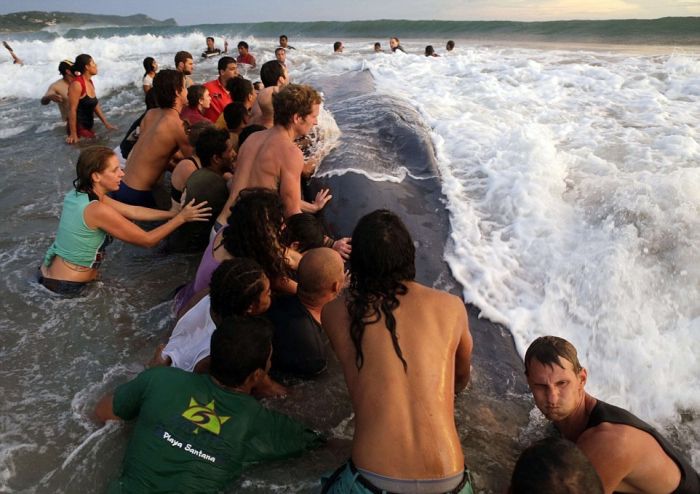|
|
Saving A Whale, Cetacean Stranding, Popoyo Beach, Tola Municipality, Rivas Department, Nicaragua
|
Causes
Strandings can be grouped into several types. The most obvious distinctions are between single and multiple strandings. The carcasses of deceased cetaceans are likely to float to the surface at some point; during this time, currents or winds may carry them to a coastline. Since thousands of cetaceans die every year, many become stranded posthumously. Most whale carcasses never reach the coast and are scavenged or decomposed enough to sink to the ocean bottom, where the carcass forms the basis of a unique local ecosystem called whale fall. Single live strandings are often the result of illness or injury, which almost inevitably end in death in the absence of human intervention. Multiple strandings in one place are rare and often attract media coverage as well as rescue efforts. Even multiple offshore deaths are unlikely to lead to multiple strandings due to variable winds and currents.
A key factor in many of these cases appears to be the strong social cohesion of toothed whales. If one gets into trouble, its distress calls may prompt the rest of the pod to follow and beach themselves alongside. Many theories, some of them controversial, have been proposed to explain beaching, but the question remains unresolved.
|
|









